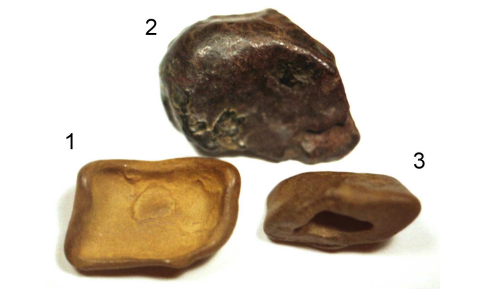papodidi
Geek
Am 30. Juni 1908 explodierte im Bereich des sibirischen Flusses Tunguska ein Meteorit...

Das könnte so ausgesehen haben und hinterliess folgende Spuren:

Nun sind erstmals Fragmente des Meteoriten gefunden worden:
May 2, 2013
First Tunguska Meteorite Fragments Discovered
Nobody knows what exploded over Siberia in 1908, but the discovery of the first fragments could finally solve the mystery.

The blast was 1000 times more powerful than the bomb dropped on Hiroshima, registered 5 on the Richter scale and is thought to have knocked down some 80 million trees over an area of 2000 square kilometres. The region is so isolated, however, that historians recorded only one death and just handful of eyewitness reports from nearby.
...
The generally accepted theory is that the explosion was the result of a meteorite or comet exploding in the Earth’s atmosphere. That could have caused an explosion of this magnitude without leaving a crater. Such an event would almost certainly have showered the region in fragments of the parent body but no convincing evidence has ever emerged.
...
That changes today with the extraordinary announcement by Andrei Zlobin from the Russian Academy of Sciences that he has found three rocks from the Tunguska region with the telltale characteristics of meteorites. If he is right, these rocks could finally help solve once and for all what kind of object struck Earth all those years ago.
...
Zlobin has not yet carried out a detailed chemical analysis of the rocks that would reveal their chemical and isotopic composition. So the world will have to wait for this to get a better idea of the nature of the body.
...
Nevertheless, this has the potential to help clear up one of the outstanding mysteries of the 20th century and finally determine the origin of the largest Earth impact in recorded history.
First Tunguska Meteorite Fragments Discovered | MIT Technology Review

Das könnte so ausgesehen haben und hinterliess folgende Spuren:

Nun sind erstmals Fragmente des Meteoriten gefunden worden:
May 2, 2013
First Tunguska Meteorite Fragments Discovered
Nobody knows what exploded over Siberia in 1908, but the discovery of the first fragments could finally solve the mystery.

The blast was 1000 times more powerful than the bomb dropped on Hiroshima, registered 5 on the Richter scale and is thought to have knocked down some 80 million trees over an area of 2000 square kilometres. The region is so isolated, however, that historians recorded only one death and just handful of eyewitness reports from nearby.
...
The generally accepted theory is that the explosion was the result of a meteorite or comet exploding in the Earth’s atmosphere. That could have caused an explosion of this magnitude without leaving a crater. Such an event would almost certainly have showered the region in fragments of the parent body but no convincing evidence has ever emerged.
...
That changes today with the extraordinary announcement by Andrei Zlobin from the Russian Academy of Sciences that he has found three rocks from the Tunguska region with the telltale characteristics of meteorites. If he is right, these rocks could finally help solve once and for all what kind of object struck Earth all those years ago.
...
Zlobin has not yet carried out a detailed chemical analysis of the rocks that would reveal their chemical and isotopic composition. So the world will have to wait for this to get a better idea of the nature of the body.
...
Nevertheless, this has the potential to help clear up one of the outstanding mysteries of the 20th century and finally determine the origin of the largest Earth impact in recorded history.
First Tunguska Meteorite Fragments Discovered | MIT Technology Review

